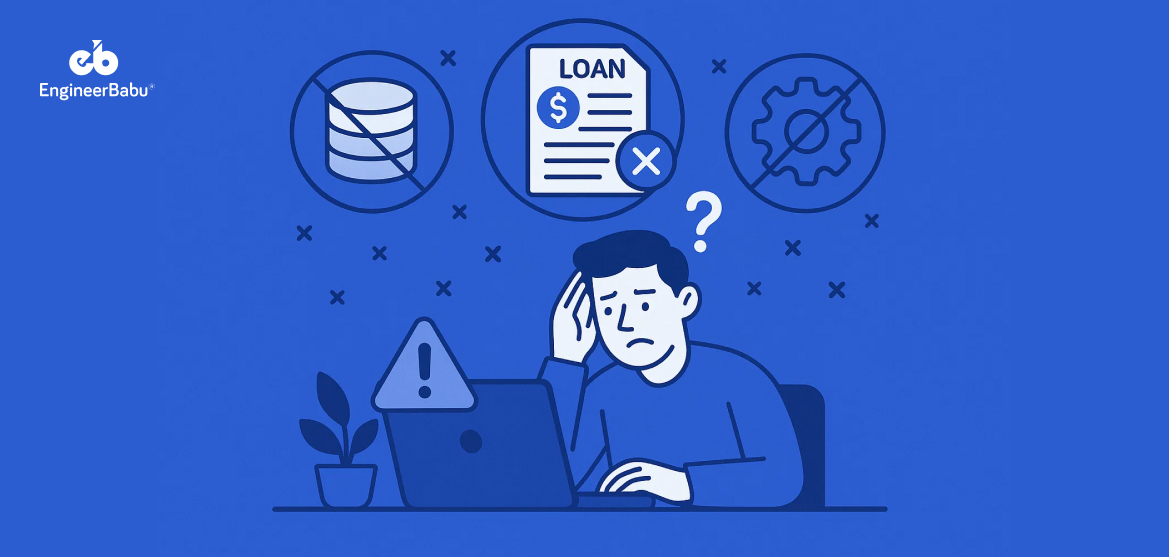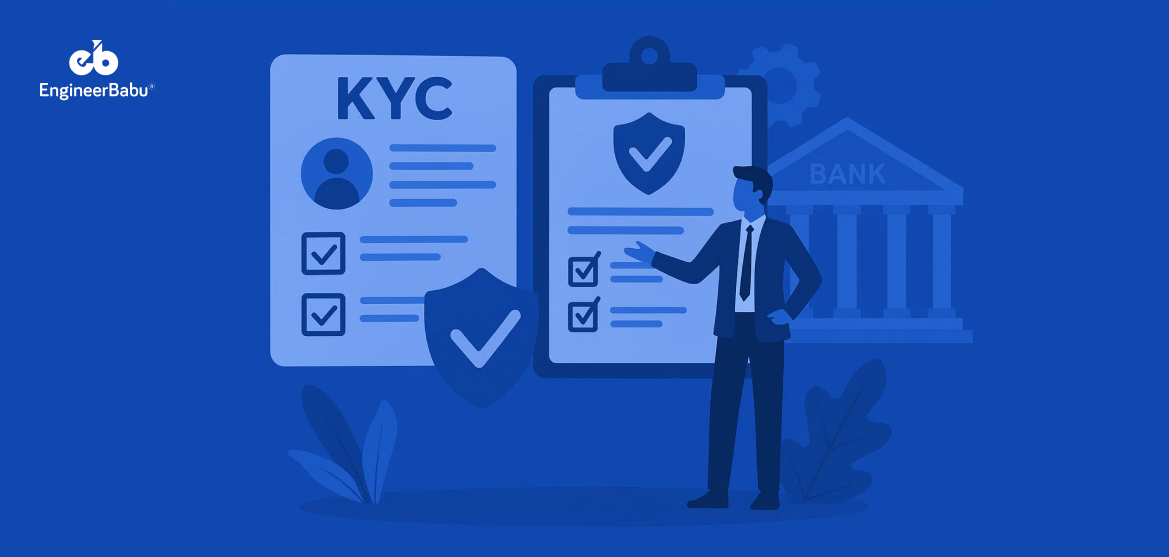Insurance is undergoing one of the fastest digital transformations in its history. What was once a paper-heavy, agent-driven business is now rapidly shifting into customers’ pockets, literally. Mobile apps have become the new face of insurance, where policies are managed, claims are filed, and trust is won.
The momentum is undeniable. Research from Mordor Intelligence projects the global InsurTech market will nearly double, growing from $1.19 trillion in 2025 to $2.19 trillion by 2030.
At the same time, consumer behaviour is evolving just as quickly. A PYMNTS survey revealed that 57% of U.S. customers now decide which companies to engage with based on the digital payment options available.
This is why forward-looking insurers are investing heavily in mobile-first strategies. Disruptors like Lemonade have already proven how instant claims processing can reshape customer expectations.
Therefore, in this guide, we’ll break down everything you need to know about insurance mobile app development: the types, advanced features, the right tech stack, and development costs.
Why Insurance Companies Need Mobile Apps Today
Not long ago, insurance was considered a “low-touch” industry, customers interacted with insurers only a handful of times: buying a policy, renewing it, or filing a claim. But the digital economy has changed the rules. Here’s why insurers need mobile apps.
Rising Demand for Digital-First Experiences
Customers want to research, compare, buy, and manage policies without calling an agent. Mobile apps make this possible by putting self-service and transparency at the centre of the customer journey. The more intuitive the app, the higher the retention and lifetime value of each policyholder.
Pressure from InsurTech Competitors
InsurTech startups are setting a new bar for customer experience. Lemonade, for instance, uses AI-driven chatbots to settle claims in under three minutes, a benchmark traditional insurers can no longer ignore. For companies exploring insurance mobile app development, matching this level of speed and simplicity is now essential to remain competitive.
Customers Expect Instant, Digital Transactions
From shopping on Amazon to instant P2P payments apps, consumers are conditioned to expect speed. In insurance, this translates to quick premium payments, instant policy issuance, and real-time claim tracking, all best delivered through a mobile app.
Operational Efficiency for Insurers
Beyond customer satisfaction, mobile apps streamline internal operations. Automating renewals, reminders, and claims processing can save insurers millions in administrative costs while reducing human errors. Combined with analytics, apps also provide valuable insights into customer behaviour and risk management.
Trust Through Transparency
Insurance has always struggled with a reputation problem, customers often feel left in the dark. Mobile apps solve this by offering real-time updates, clear policy details, and instant claim statuses, fostering a sense of control and trust. And when executed correctly, insurance mobile app development doesn’t just improve efficiency, it directly strengthens the bond between insurer and policyholder.
Types of Insurance Mobile Apps
Not all insurance apps serve the same purpose. Understanding these types of insurance apps is the first step in effective insurance mobile app development.
Life Insurance Apps
These apps give customers a secure way to explore policies, calculate premiums, and manage long-term investments. Features like reminders for premium payments, claim assistance, and integrated calculators help simplify complex products.
Life insurance apps focus on transparency, making it easier for policyholders to understand their benefits and plan for the future.
Example: Ladder
Car Insurance Apps
Car insurance requires quick, data-driven support. Insurers in this category often integrate telematics to track driving behaviour, enable instant claim filing after accidents, and provide digital policy documents in the insurance mobile app development. Vehicle-focused solutions play a key role in reducing fraud, speeding up claims, and improving overall customer satisfaction.
Example: Progressive
Property Insurance Apps
Protecting homes, offices, and valuable assets calls for apps that make documentation and claims hassle-free. These apps typically offer photo upload features for damages, digital records of property ownership, and instant updates on claim progress. The goal is to provide reassurance to customers during emergencies while streamlining insurer workflows.
Example: Lemonade
Travel Insurance Apps
Designed for frequent travellers, these apps offer policy purchase on-the-go, emergency support abroad, and real-time claim submission. Features such as 24/7 assistance, document storage, and integration with airlines or healthcare providers enhance the user experience. Travel insurance apps ensure policyholders get fast, reliable help no matter where they are.
Example: Travelex
Commercial Insurance Apps
Businesses rely on apps tailored to cover workplace risks, liability, and employee benefits. These apps allow enterprises to manage multiple policies, file claims for damages or accidents, and track coverage across departments. For insurers, commercial insurance apps streamline compliance-heavy workflows while providing transparency that builds stronger partnerships with corporate clients.
Example: Progressive Commercial Insurance
Must-Have Features in an Insurance Mobile App
For insurers, the real value of an app lies in how well it blends simplicity, security, and speed. Let’s look at the core features that make modern insurance apps indispensable.
Easy Onboarding & KYC Verification
First impressions define user trust. An insurance app should offer guided onboarding, biometric logins, and automated KYC verification. When policyholders can start using the app within minutes, without endless forms or delays, they are more likely to stay engaged and renew policies digitally.
Policy Management Dashboard
Every insurer needs a central dashboard where customers can view active policies, upcoming renewals, and benefits at a glance. In insurance mobile app development, this is often the “control centre” for policyholders, bringing all information together in a clear, user-friendly format that strengthens transparency and trust.
Premium Reminders & Secure Payments
Missed payments are a common challenge. Automated reminders, push notifications, and flexible payment gateways ensure that premiums are paid on time. Security features like tokenization and two-factor authentication give users confidence, while insurers benefit from reduced churn and improved cash flow.
Claim Submission & Tracking
Claims make or break customer loyalty. In insurance mobile app development, smooth claim filing is critical, users should be able to upload photos, submit forms, and track claim status in real time. Giving customers instant updates not only prevents frustration but also builds stronger confidence in the insurer.
AI-Powered Chatbots & Support
Policyholders expect answers instantly, not after days of waiting. AI-driven chatbots can resolve common queries, guide users through processes, and escalate complex issues to human agents. This feature reduces dependency on call centres, improves efficiency, and ensures customer support is available 24/7.
Document Storage & E-Signatures
Paperless processes speed up operations. Insurance mobile app development should enable customers to store policies, ID proofs, and claims-related documents securely in-app. Adding e-signature functionality further accelerates policy issuance, reduces paperwork, and ensures compliance with industry regulations, while offering customers a frictionless, modern digital experience.
Agent-Centric Tools
Lastly, agents and brokers are the backbone of distribution. Providing them with in-app CRM integrations, sales tracking tools, and commission calculators ensures they work more efficiently. Also, by enabling real-time access to leads and policy updates, insurers strengthen collaboration and improve service delivery across all customer touchpoints.
Step-by-Step Process of Insurance App Development
Transforming an insurance idea into a functional, user-friendly app requires a structured approach. Here’s a six-step roadmap that balances innovation, compliance, and customer needs.
Discovery, Research & Compliance
This stage lays the groundwork for success. It involves analysing market demand, identifying customer pain points, and studying competitors to uncover differentiation opportunities. Equally important is regulatory research, insurance is a highly governed industry, and skipping compliance reviews can derail an app before it even launches.
Insurers that invest in a detailed discovery process save time, reduce risks, and create solutions aligned with both customer expectations and legal frameworks.
UI/UX Design
In insurance, design directly influences trust. Customers need an interface that is simple, accessible, and transparent. Wireframes, prototypes, and design sprints help refine usability before development begins. Moreover, a well-crafted user journey ensures policyholders don’t feel overwhelmed by jargon or complex navigation.
Also, adding elements like biometric login and clean dashboards makes processes like claim filing intuitive. Ultimately, UI/UX design ensures that customers not only download the app but continue to use it regularly.
Backend & Frontend Development
This step bridges design with functionality. Backend development covers secure databases, encryption, and integrations with legacy systems, while the frontend confirms that users experience fast load times and responsive layouts. In insurance mobile app development, these layers must balance speed with security.
For example, a crash during claims submission could damage brand trust instantly. A carefully engineered stack creates a strong backbone that supports scalability, future features, and regulatory requirements without compromising user satisfaction.
API Integrations
Insurance apps rarely operate in isolation, they need to connect with payment gateways, KYC tools, CRM platforms, analytics, and even IoT devices in auto or health insurance use cases. Robust API development and integrations make this possible.
The key is ensuring smooth data flow between systems without delays or breakdowns. A poorly integrated payment gateway, for instance, could cause failed transactions and customer churn. Done correctly, APIs transform a standalone app into a fully connected digital insurance ecosystem.
Testing, QA & Deployment
Testing assures that the app is not only functional but also compliant and secure. QA teams perform stress tests, penetration testing, and usability checks to cover every possible risk. In insurance mobile app development, one overlooked bug could result in a denied claim or lost transaction, leading to reputational damage.
After testing, deployment strategies like beta releases or phased rollouts allow insurers to monitor adoption rates while limiting exposure. This careful approach makes launches smoother and less risky.
Post-Launch Support & Iteration
The insurance journey doesn’t end at launch, it evolves. Post-launch support includes resolving technical bugs, releasing feature upgrades, and adapting to new regulations. More importantly, insurers should gather customer feedback through in-app surveys or analytics to guide future improvements.
Iteration assures that the app stays relevant as user expectations shift and technologies advance. Companies that actively invest in this cycle create long-term engagement, positioning their apps as trusted digital companions rather than just transactional tools.
Cost of Insurance Mobile App Development
The investment behind an insurance app varies widely, depending on scope, compliance, and technology choices. Let’s break it down into the main cost drivers.
Key Factors Influencing Cost
The price of building an insurance app depends on feature depth, platform selection, third-party integrations, and compliance requirements. Adding advanced modules such as AI chatbots or telematics will naturally increase complexity, while stricter regulatory markets require additional security investments. Every decision shapes the final financial commitment.
Basic Customer App
A customer-focused insurance app with essential features like policy management, payment gateways, and claims filing, falls on the lower end of the cost spectrum. It provides insurers a functional digital presence but avoids heavy integrations or advanced analytics. Such apps work best for companies entering mobile-first engagement for the first time.
Mid-Level App with Integrations
When insurers expand beyond the basics by adding CRM tools, KYC services, or multiple payment options, the investment rises. In insurance mobile app development, this middle tier is the most common choice, striking a balance between cost and functionality while still providing customers with a reliable, connected experience.
Enterprise-Level App with Advanced Features
Large-scale projects require building complex ecosystems that integrate AI-driven recommendations, IoT-enabled telematics, predictive analytics, and enterprise security. These apps are designed for scalability and high-volume usage, supporting global operations. The financial commitment is higher, but the return comes through deeper customer engagement and operational efficiency.
Cost-Saving Strategies
Businesses can reduce expenses through smart planning. Using cross-platform frameworks ensures faster Android and iOS app development, outsourcing lowers in-house staffing costs, and adopting an MVP-first strategy validates ideas before committing to full-scale builds. Smart use of these methods makes insurance mobile app development more efficient, freeing resources for innovation and long-term customer value.
Tech Stack for Insurance Mobile App Development
Choosing the right tech stack defines the scalability, security, and performance of an insurance app. Here’s how each layer contributes to building a reliable solution.
Frontend Technologies
The user interface must be fast, responsive, and engaging. Frameworks like React Native, Flutter, Swift, and Kotlin dominate this space. When applied strategically, frontend choices in insurance mobile app development create intuitive journeys for policyholders. Thus, this confirms a smooth navigation and reliable performance across multiple devices without compromising design or usability.
Backend Frameworks
The backend powers business logic, database connections, and security protocols. Options such as Node.js, Java, and .NET provide the flexibility to handle high-volume traffic and sensitive insurance data. A carefully engineered backend ensures that claim requests, premium payments, and policy updates run seamlessly in real time.
Databases & Cloud Infrastructure
Data is at the core of insurance operations. PostgreSQL, MongoDB, and Firebase support structured and unstructured data, while cloud platforms like AWS, Azure, and Google Cloud offer scalability. Within insurance mobile app development, a robust database-cloud combination secures policyholder information and allows insurers to expand globally without disruptions.
APIs & Integrations
APIs connect the app with third-party services like payment gateways, KYC verification, CRM tools, and telematics for auto insurance. The key to success lies in smooth, fault-tolerant integrations. Poorly designed APIs can disrupt the customer journey, while strong integrations make the app feel seamless and reliable.
AI, ML & Analytics
Predictive analytics, risk scoring, and personalized policy suggestions depend on AI and ML. Tools like TensorFlow, IBM Watson, or Google AI can transform raw data into actionable insights. By embedding these capabilities into insurance mobile app development, insurers gain smarter fraud detection, faster underwriting decisions, and more tailored customer experiences that strengthen long-term loyalty.
Security & Compliance Tools
Security is non-negotiable. Features like end-to-end encryption, OAuth 2.0, JWT, and biometric authentication protect sensitive user data. Compliance tools also ensure adherence to standards like HIPAA, GDPR, or IRDAI. A secure tech stack doesn’t just safeguard policyholders, it builds trust, which is the most valuable currency in insurance.
Conclusion
The future of insurance belongs to digital-first companies that prioritise transparency, speed, and customer trust. A well-built app transforms policyholder interactions, reduces operational costs, and drives long-term loyalty.
Choosing the right partner for insurance mobile app development ensures your solution is scalable, secure, and competitive. EngineerBabu, a trusted software development company, specialises in building high-performance insurance apps tailored to complex compliance needs. Ready to transform your insurance business?
Connect with EngineerBabu today and let’s craft the mobile solution your customers deserve.
FAQs
1. What is the importance of insurance mobile app development for modern insurers?
It enables insurers to meet digital-first expectations, streamline claims, and deliver self-service convenience. Apps also help build stronger customer trust by providing transparent, real-time policy management.
2. How long does it take to complete insurance mobile app development?
Timelines vary depending on features, integrations, and compliance requirements. A basic app can be developed faster, while enterprise-level apps with AI and IoT features may require longer cycles.
3. What features should an insurance app include?
Must-have features include onboarding, policy management, secure payments, claim filing, and real-time updates. Advanced features like AI-driven recommendations, telematics, and blockchain can provide a competitive edge.
4. How do insurers ensure security in their mobile apps?
Security is maintained through encryption, biometric authentication, multi-factor login, and compliance with regulations like HIPAA, GDPR, and IRDAI. Rigorous testing further safeguards customer data and transactions.
5. Can outsourcing reduce the cost of developing an insurance mobile app?
Yes. Outsourcing to an experienced partner allows insurers to cut hiring costs while accessing specialised expertise. Combined with cross-platform frameworks, outsourcing makes development more cost-effective without compromising quality.
![Insurance Mobile App Development [Complete Guide] 1 Insurance Mobile App Development [Complete Guide]](https://engineerbabu.com/blog/wp-content/uploads/2025/08/Insurance-Mobile-App-Development.jpg)



